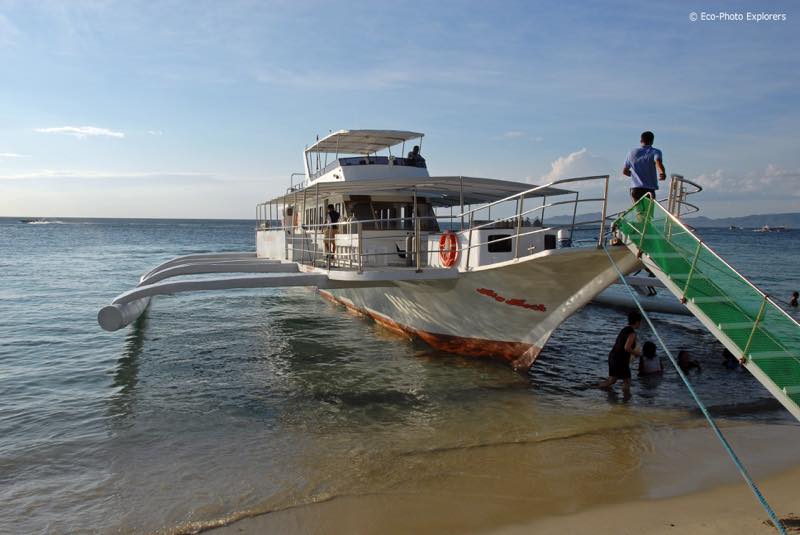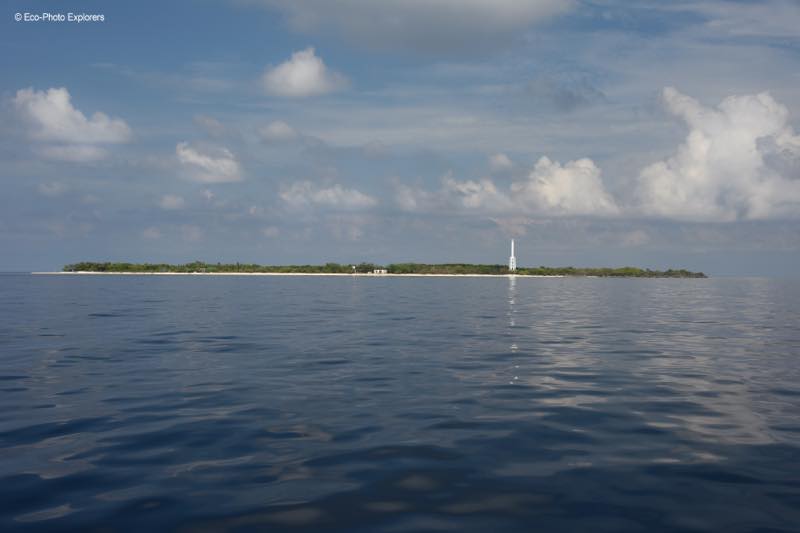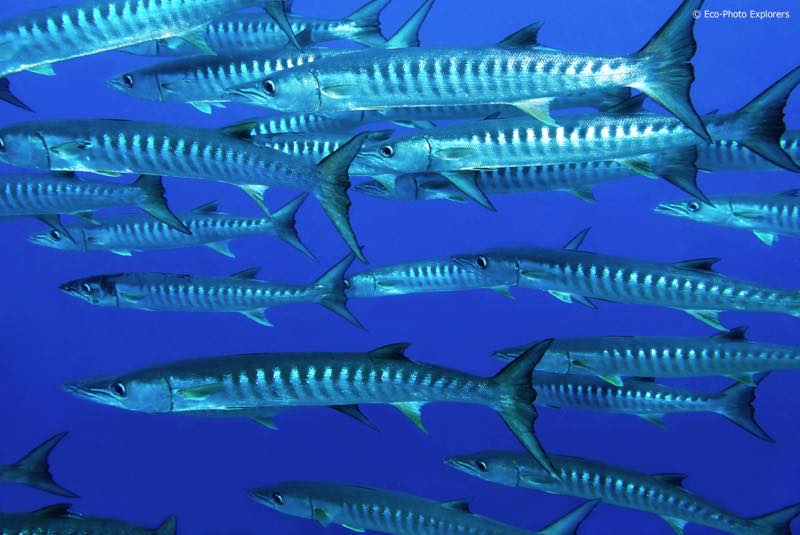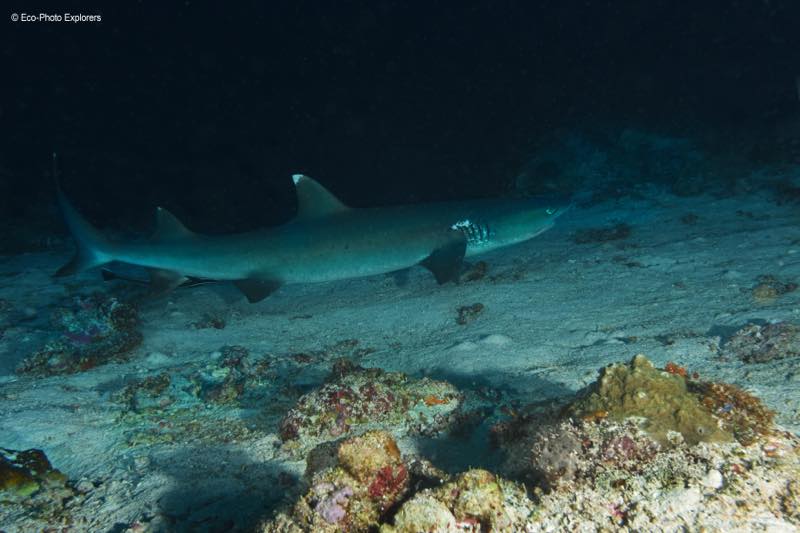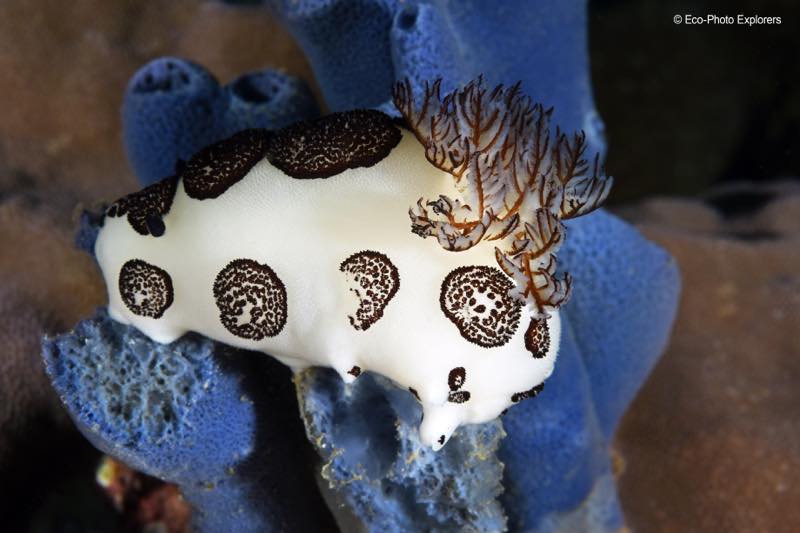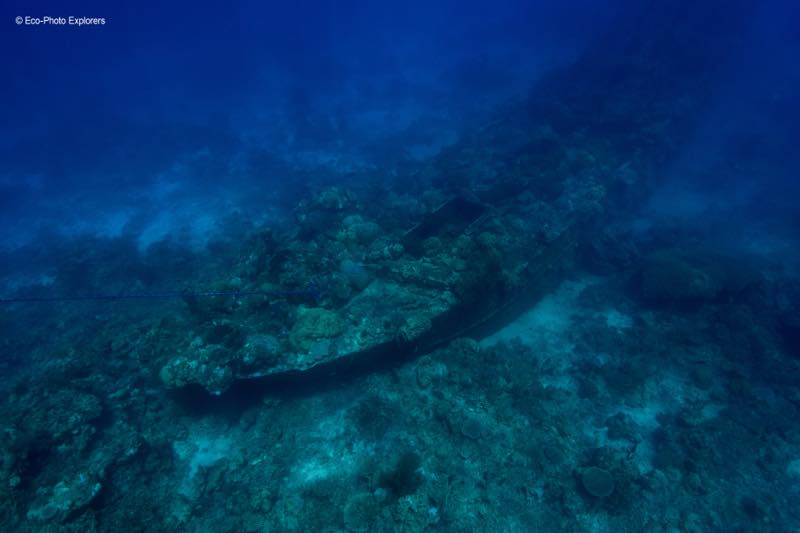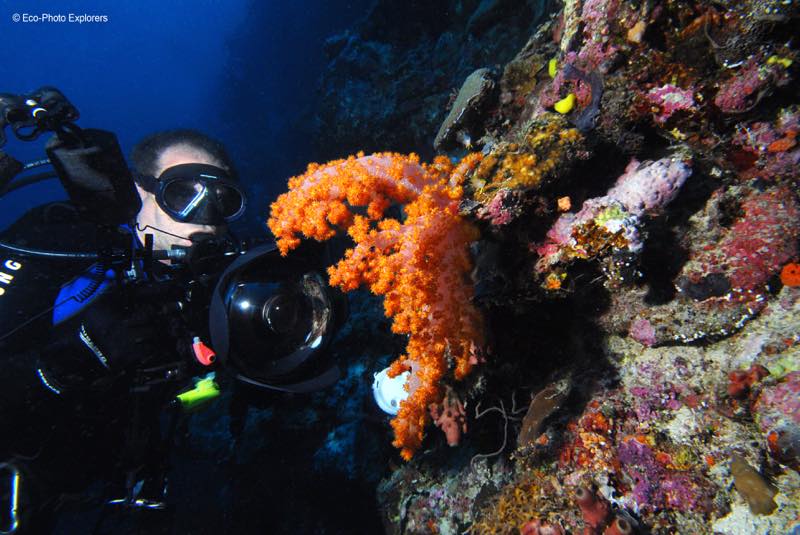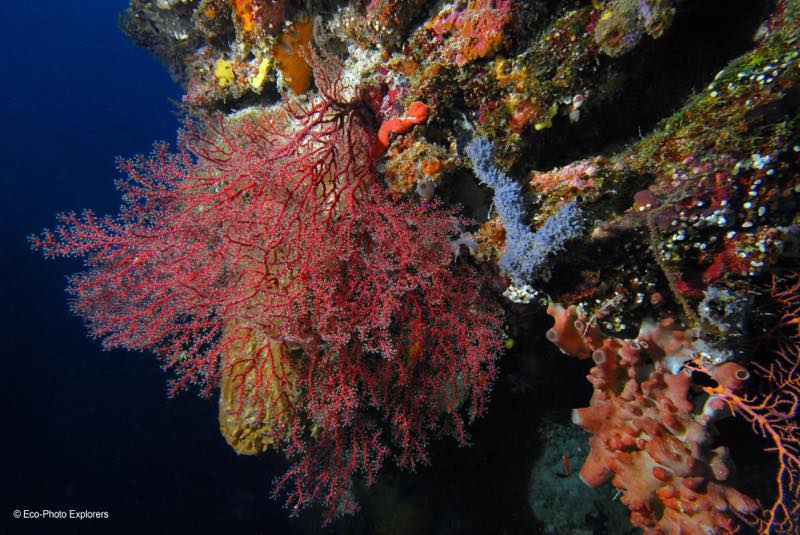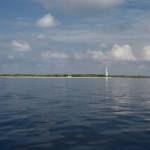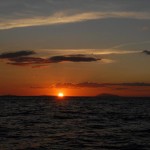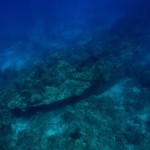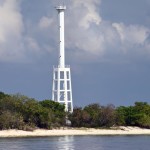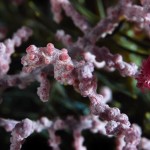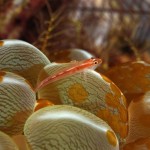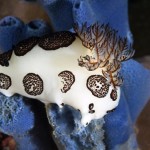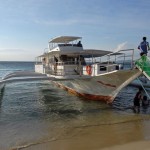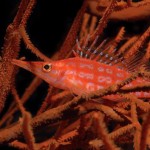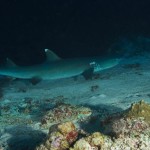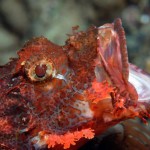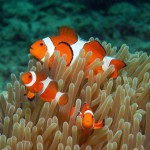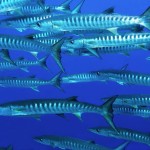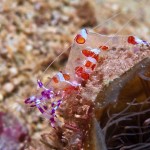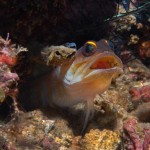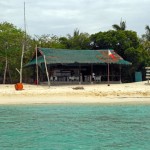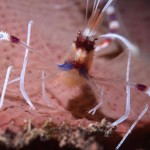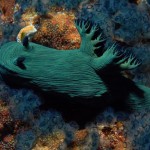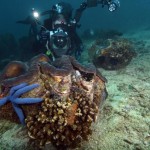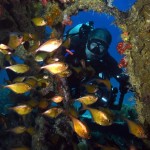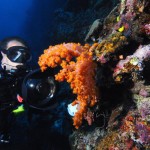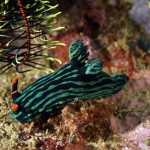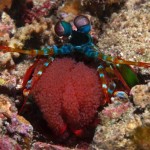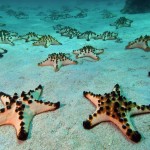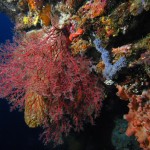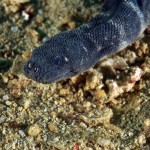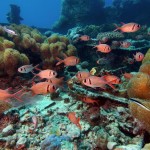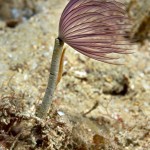There are more than 7000 islands in the Philippines, and this archipelago, which straddles the Philippine Sea and the South China Sea, is considered the second largest in the world, behind only Indonesia in size. Located squarely inside the Coral Triangle, a vast ocean region known for its amazing biodiversity and teeming coral reefs, the Philippines can easily boast numerous world-class dive sites and exciting travel opportunities.
Text and Photography by Michael Salvarezza and Christopher Weaver
(Eco-Photo Explorers)
Perhaps topping this list, however, is the remote Apo Reef Island and its exquisite reef system.
Our journey to Apo Reef began on the sands of White Beach, just a few miles from Puerto Galera on the island of Mindoro. It was there that we boarded the 82-ft safari boat Big Beth, from the Marco Vincent Dive Resort, and within moments we were headed west to the fabled Apo Reef.
Apo Reef, an impressive reef structure that rises from the deep ocean to actually break the surface of the water at low tide, is a bumpy 12-hour run from our home base at White Beach. We spent our time gazing at the shimmering reflection of the full moon, marveling at the curtain of stars above us and enjoying a sumptuous meal prepared by Omar, the on board chef. The anticipation of diving one of the most spectacular reef systems in the world was palpable.
By daybreak, the comforting light of the Apo Reef Island Lighthouse flickered from across the horizon and before long we were resting comfortably alongside this tiny sliver of land, surrounded by miles of open ocean. The entire area is a designated Philippine Natural Park covering 15,792 hectares (39,000 acres) and is known for its extensive coral cover and high level of biodiversity. Apo Reef Island is tiny (just 02 hectares or 54 acres) but it is home to a protected mangrove forest and other tropical island habitats, along with a unique and historical lighthouse and a small ranger station where you can learn more about this unique and protected ecosystem.
There are more than 20 established dive sites at Apo Reef and it was now time to dive.
Our first dive was at a site known as South Corner and a school of Barracuda cruising slowly along the reef wall immediately greeted us. Descending to 30 meters (100 feet), we were able to instantly appreciate the extent of the coral biodiversity: healthy stands of branching corals, brain corals and star corals mixed with soft corals and other types of reef building organisms.
All along the wall were clouds of Anthias, damselfish and other reef fish that darted in and out of the protective shelter of the reef. Drifting in the current were schools of Triggerfish and Jacks and tucked beside huge barrel sponges were colorful anemones and their resident anemonefish. At South Corner, Apo Reef had its finest reef display on exhibit.
Eagle’s Wall was our next dive site, another wall dive with a similar profile as South Corner. Here, we glimpsed several White-Tip Reef Sharks tantalizingly swimming just beyond our maximum depth range. Closer to the surface on the backside of the reef wall were several Napoleon Wrasse and Bumphead Parrotfish. These impressive but shy fish managed to hold their appearance until after we had begun our safety stop…as photographers we could almost swear they were mocking us with their late arrival!
The Apo Reef system was, unfortunately, subject to dynamite fishing practices prior to its designation as a marine reserve, and some of the detrimental effects of this can be seen in spots as piles of coral rubble can be found. Some of this damage is not attributable to blast fishing but, rather, typhoon damage through the years. Now that the reef system is protected, the damage has been contained.
Apo Reef is home to numerous macro critters and underwater photographers can delight in searching for riotously colored nudibranchs, the gaudy Mantis Shrimp, the aptly named Orangutan Crab and many other creatures on their diving bucket lists. But for big animal action, Apo Reef divers look toward Shark Airport, a unique stretch of reef that is home to stretches of white sand, which White Tip Reef sharks often use as convenient resting places from the currents sweeping the area. Sometimes there are so many that it appears as if they are airplanes waiting to take off at a busy airport.
Most of the dive sites at Apo Reef are along walls and deep drop-offs, and the nutrient rich currents help to fuel a parade of large pelagics and big animals. But along the shallow end of the reef east of the island lies the wreck of an unknown freighter. Resting upright in just 10 meters (30 feet) of water, the bones of this wreck have become encased in marine growth and the decaying hulk is home to blizzards of reef fish. We were transfixed by swarms of glassy sweepers, small baitfish, cardinalfish and Anthias as we explored the remains of this wreck. As we swam towards the bow of the wreck, which is embedded in the reef itself, a banded sea snake undulated towards us, unconcerned by our bubble making scuba gear and focused intently on finding its prey.
Apo Reef has been protected and studied since 1980. The Apo Reef strategy for management of the area consists of activities such as the protection of the reef system, law enforcement of violations, information and education programs, research into the biodiversity of the region and the responsible management of eco-tourism activities, including diving. Scientists have identified 385 species of fish in these waters, along with 78 genera of marine invertebrates and 190 species of hard corals. 38% of the 500 known coal species in the Philippines Archipelago can be found here. In addition, a number of threatened or near-threatened species of wildlife, such as several species of sea turtle and marine mammals, depend on Apo Reef for food, shelter and breeding areas. This dizzying array of life is on full display across the Apo Reef system and it is a special example of why the Coral Triangle in total is such an essential marine ecosystem.
After several days of mesmerizing dives, it was time to leave the Apo Reef area and head back to Puerto Galera. Along the way, we stopped for a dive alongside Bonita Island, and explored lush coral gardens so healthy that some have referred to these stretches of coral jungle as God’s Gardens. We then stopped to explore Verde Island, and its famous current-swept dropoffs teeming with life. Indeed, the Puerto Galera, Apo Reef, Verde Island “triangle” can almost be considered a mini-coral triangle within the Coral Triangle!
Actually, the entire area surrounding Puerto Galera is a diver’s amusement park. There are opportunities to dive on ghostly shipwrecks, experience current-swept dramatic walls, search for weird and wonderful macro subjects and count the myriad species of coral and fish inhabiting these waters. But it is Apo Reef that holds a special place for divers willing to make the journey to this remote site.
As we stepped off the Big Beth and dug our toes into the sand of White Beach upon our return, we stopped and turned to look back out over the tranquil waters of the South China Sea and realized that we had left a piece of our hearts at Apo Reef. It would be necessary for us to return!
Text and Photography by Michael Salvarezza and Christopher Weaver
(Eco-Photo Explorers)
- Apo Reef Island and the Apo Reef Lighthouse
- Sunset over Apo Reef
- The wreck of an unidentified ship at Apo Reef
- Apo Reef Lighthouse standing guard over the coral reefs at Apo Reef
- A good dive guide is the best way to find Pygmy Seahorses (Hippocampus bargibanti)
- The diminutive Stonycoral Ghostgoby (Pleurosicya micheli)
- Photographed at Apo Reef is the Funeral Jorunna (Jorunna funebris)
- Marco Vincent’s dive vessel, Big Beth, preparing to leave for Apo Reef
- Careful photographers can spot the Longnose Hawkfish (Oxycirrhites typus)
- A White-Tip Reef Shark (Triaenodon obesus) at the Shark Airport dive site
- A Tasseled Scorpionfish (Scorpaenopsis oxycephala) invites a cleaning
- Most people think “Nemo” when they see the False Clownfish (Amphiprion ocellaris)
- Apo Reef is home to large schools of fish, like these Blackfin Barracuda (Sphyraena barracuda)
- The flamboyantly colored Yellow-spotted Anemone Shrimp (Ancylomenes luteomaculatus)
- Yellowbarred Jawfish (Opistognathus sp.) can only be identified by the bright yellow mark on the front of their eyes
- Ranger station and visitor pavilion on Apo Reef Island
- A Banded Coral Shrimp (Stenopus hispidus) with a small clutch of eggs
- Nudibranchs such as this Miller’s Nembrotha (Nembrotha milleri) are frequently seen on the reefs at Apo.
- Author Christopher Weaver photographs a Giant Clam off Puerto Galera
- Author Christopher Weaver with a school of Copper Sweepers (Pempheris oualensis)
- Author Michael Salvarezza explores the reef
- Macro photographers delight in photographing nudibranchs such as this variation of the Kubaryana’s Nembrotha (Nembrotha Kubaryana)
- A Peacock Mantis Shrimp (Odontodactylus scyllarus) with her egg brood
- An army of Chocolate Chip Stars (Protoreaster nodosus) patrols the bottom near Puerto Galera
- The vibrant corals of Apo Reef
- The fearsome face of a Banded Sea Snake
- Epaulette Soldierfish (Myriristis kuntee) patrolling a shipwreck at Apo Reef
- Interesting macro subjects can be found in abundance at Apo Reef

